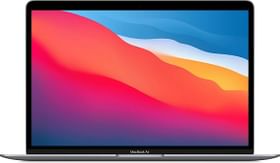Nvidia GPUs have made significant advancements in gaming performance and other applications such as artificial intelligence (AI) and machine learning (ML). The key contributors to Nvidia’s GPU performance are CUDA and Tensor cores, which are present in most modern Nvidia GPUs. This guide aims to provide a clear understanding of these cores, their respective functions, and their impact on GPU performance.
CUDA Cores: Parallel Processing Powerhouses
What are CUDA Cores?
CUDA stands for Compute Unified Device Architecture. Introduced in the 2014 Maxwell architecture, CUDA cores specialize in parallel processing within Nvidia GPUs.
Functions and Applications of CUDA Cores
CUDA cores excel at various tasks, including cryptographic hashes, physics engines, data science projects, and game development. They significantly outperform regular CPU cores in numerical workloads due to their large numbers (thousands) and parallel processing capabilities.
CUDA Cores for Gaming and Numerical Workloads
While CUDA cores enhance gaming performance, their primary purpose is graphical processing. They were not initially designed for intensive numerical computations, although they can handle such tasks effectively.
Tensor Cores: Boosting AI and ML Workloads
What are Tensor Cores?
Nvidia introduced Tensor cores in the Volta architecture (2017) for data center GPUs, and they became available in consumer GPUs with the Turing architecture (RTX 20-Series GPUs).
Functions and Applications of Tensor Cores
Tensor cores significantly accelerate computational workloads by performing multiple operations per clock cycle, primarily focusing on matrix multiplication. They are specifically tailored for AI and ML applications.
Performance Trade-Offs
Tensor cores provide substantial computational speed but sacrifice a degree of accuracy compared to CUDA cores. For training ML models, the improved speed and cost-effectiveness of Tensor cores outweigh the accuracy loss.
Impact on GPU Performance
Core Distribution in GPUs
The number of CUDA and Tensor cores in a GPU depends on its target audience and use case. For example, consumer-facing gaming GPUs like the RTX 4090 prioritize CUDA cores, while data center GPUs like the L40 strike a balance between CUDA and Tensor cores.
Performance Comparison
In terms of numerical calculations crucial for AI and ML workloads, GPUs with a higher number of Tensor cores, such as the L40, deliver superior performance. The increase in computational speed is particularly impressive when considering the power consumption of these GPUs.
Choosing the Right GPU
The Importance of Both Cores
Regardless of whether you’re purchasing a GPU for gaming or data center applications, both CUDA and Tensor cores play crucial roles. Consumer-facing gaming GPUs benefit from AI features like DLSS, while data center GPUs rely on the combined power of CUDA and Tensor cores.
GPU Specializations
Different GPUs cater to different needs. GPUs like the RTX 4090 excel in gaming performance, while GPUs like the A100 and L40 from the A-Series are better suited for numerical calculations and training neural networks in data centers.
Considerations for GPU Selection
When selecting a GPU, focus on its overall capabilities, intended use, and specific requirements rather than solely prioritizing the number of cores. Evaluating the GPU’s suitability for your use case will ensure a well-informed decision.
Understanding CUDA and Tensor cores is crucial when evaluating Nvidia GPUs for gaming, AI, or ML applications. CUDA cores excel in parallel processing and gaming performance, while Tensor cores provide accelerated computational capabilities for AI and ML workloads. By considering the core distribution and specialization of different GPUs, users can select the optimal GPU for their specific requirements.































